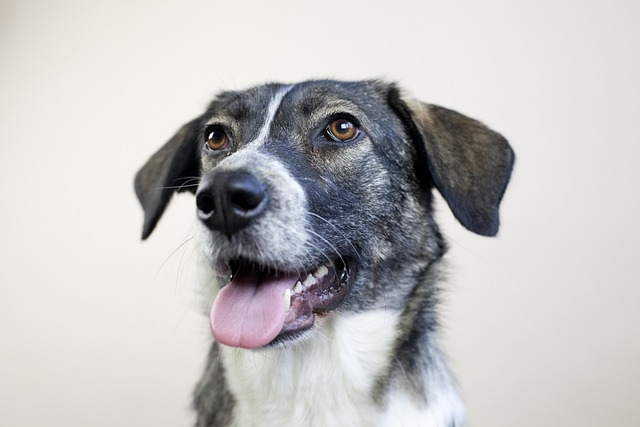
How to train a dog to pee outside?
Watching your new puppy squat on the living room rug can be frustrating, but housebreaking is a journey every dog owner goes through.
When you're standing in your kitchen after a long day, and your Golden Retriever is bouncing around with muddy paws, the last thing you want to do is shout commands across the house. This is where the magic of the dog sit command hand signal becomes invaluable. Unlike verbal commands that can get lost in household noise or outdoor distractions, a well-executed hand signal cuts through the chaos and communicates directly with your dog's visual processing system.
Dogs naturally rely heavily on body language and visual cues in their communication with both other dogs and humans. When you establish effective hand signals for dog sit command training, you're tapping into this innate ability. The beauty lies in the consistency and clarity that hand signals provide, especially in environments where verbal commands might be ineffective due to distance, noise, or even your dog's hearing limitations as they age.
In American households, our cultural gestures often unconsciously influence how we communicate with our pets. Consider how Americans typically use an upward palm gesture when asking someone to "hold on" or "stop" - this same motion translates beautifully into dog training. However, cultural influence on dog training hand signals runs deeper than you might expect. The way we naturally move our hands, our preferred gestures, and even our spatial relationships with pets reflect broader American values around personal space and direct communication.
For instance, American dog owners often favor more dramatic, clear-cut gestures compared to subtler European approaches. This directness actually works in our favor when teaching obedience commands. Your dog doesn't need to decode complex cultural nuances; they simply need consistency and clarity. However, be mindful that some hand movements common in American culture - like pointing directly at someone, which can seem confrontational to humans - might initially confuse or intimidate sensitive dogs.
The most effective hand signal for the sit command typically involves raising your hand with palm facing up, fingers pointed toward the ceiling, and moving it in a slight upward motion. This gesture feels natural to most American dog owners because it mirrors how we might gesture "up" or "stop" in everyday conversation. Some trainers prefer a closed fist moving upward, but the open palm tends to be more visible and less threatening to dogs who might be hand-shy.
When selecting your specific hand signal, consider your living situation. If you're in an apartment building where noise restrictions apply during certain hours, hand signals become even more valuable. Your neighbors will appreciate the reduced barking that comes with effective visual communication, and you'll comply with most residential lease agreements that require consideration for noise levels.
Start your training in a quiet, familiar environment where your dog feels comfortable. Hold a small treat in the hand you'll use for the signal, keeping it just above your dog's nose level. As you slowly move your hand upward with the palm-up gesture, your dog's natural instinct will be to follow the treat with their eyes and nose, which typically causes them to sit. The moment their bottom touches the ground, mark the behavior with a "yes" or click if you're using a clicker, then immediately reward with the treat.
Repeat this process for several short sessions throughout the day, gradually reducing your reliance on the treat lure while maintaining the hand signal. Most dogs begin connecting the visual cue with the desired behavior within three to five training sessions. Remember that positive reinforcement training, which emphasizes rewards over corrections, aligns with current American animal welfare standards and is legally required in many professional training facilities.
During the learning phase, ensure you're following local leash laws and vaccination requirements when practicing in public spaces. Most American municipalities require current rabies vaccination certificates, and practicing commands like sit becomes an excellent opportunity to demonstrate your dog's training level to neighbors and community members. This public demonstration of control can be particularly important if you're renting and need to prove your dog is well-behaved.
One common challenge American dog owners face is inconsistency in hand signal execution, especially in households with multiple family members. Children might raise their hands too high, or partners might use slightly different gestures. Address this by having all family members practice the exact same motion and height. Document your chosen signal with a quick phone video that everyone can reference.
Another frequent obstacle occurs when dogs become overly excited or distracted, particularly in stimulating environments like dog parks or busy sidewalks. In these situations, how to teach sit command with hand signals requires patience and incremental exposure. Start with the hand signal in low-distraction environments, then gradually increase the complexity of the surroundings as your dog's response becomes more reliable.
Weather considerations also matter more than many realize. During bright sunny days, ensure your hand signal creates enough contrast against the sky for your dog to see clearly. In low-light conditions, you might need to position yourself where available light illuminates your gesture. These practical considerations reflect the reality of dog ownership across diverse American climates and living situations.
Dog obedience and hand gesture training becomes particularly valuable for specific breeds common in American households. Herding breeds like Border Collies and Australian Shepherds often excel with visual commands due to their working heritage, while sight hounds like Greyhounds may initially need more patience as they adapt to focusing on close-range visual cues rather than distant movement.
The integration of hand signals with verbal commands creates a comprehensive communication system that serves you well throughout your dog's life. As your pet ages and potentially experiences hearing loss, those visual cues you've established will maintain your communication bond. This long-term thinking reflects the American cultural value of planning ahead and adapting to changing circumstances.
Success with dog sit command hand signal training ultimately depends on your commitment to consistency and positive reinforcement. Every dog learns at their own pace, and cultural factors like your natural gesture style and household dynamics will influence the specific approach that works best for your family. The key lies in finding the hand signal that feels authentic to your communication style while remaining clear and consistent for your dog's understanding.

Watching your new puppy squat on the living room rug can be frustrating, but housebreaking is a journey every dog owner goes through.

If your dog turns a deaf ear to the “sit” command, don't beat yourself up. It's a common struggle for pet parents, and cracking the code requires patience, observation, and a sprinkle of creativity.

Coming home to a dog that growls, lunges, or shows teeth is heart-breaking. Aggression isn’t just scary—it can strain the bond you want with your furry friend.

Picture this: It’s 3 AM in your Seattle apartment complex courtyard, rain dripping down your neck as your 12-week-old Golden Doodle, Benny, sniffs every leaf instead of peeing.

Ever found yourself crouched on the kitchen floor, staring at a fresh puddle and wondering if there’s a magic solution to puppy potty training?

Picture this: You’re rushing to clean up your 12-week-old Labrador’s puddle on your Chicago apartment’s hardwood floor again while late for work.